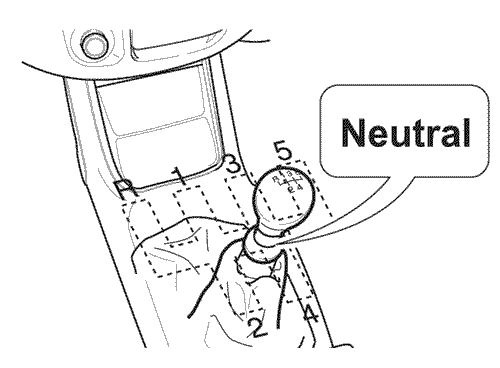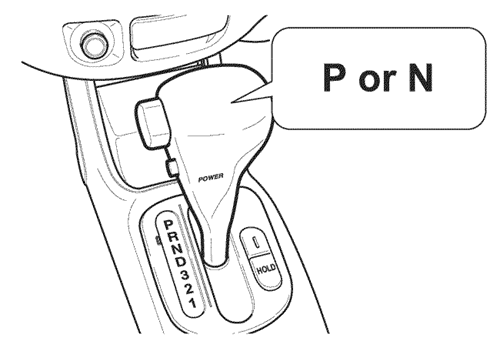SECTION
7
ANNEX
1. RECEIVING
INSPECTION
When receiving a new vehicle, Dealer is to inspect
it immediately for damage, obvious missing or incorrect part and
/ or options. This inspection is to be completed before
accepting the receipt of vehicle.
- 1) Inspection of new
vehicle
- The
inspection of each received for possible damage is very
important because new vehicles have usually traveled a
long distance from the factory to the Dealer, often
passing through several methods of
transportation.
- The following should be included
in the inspection;
- a. Walk around inspection of
the exterior and visible areas of the vehicles
undercarriage
- b. Under hood
inspection
- c. Trunk or Cargo area inspection,
including all parts and/or options normally stored or
transported in this area
- d. Interior inspection,
including all trim panels, headlines carpets, and
upholstery.
- 2) Transportation
damage
- GMDAT's (GM
Daewoo Auto & Technology Co., Ltd.) responsibility
for damages and / or shortages extends only to the
passage of vehicle through the ship's rail at the port
of shipment. Thereafter such responsibility shall be for
the carrier and / or insurance company until the
delivery documents is signed by the Dealer's
representative as having received the vehicles either in
good order or with exceptions noted.
- Any
transportation damage including stolen or missing part
should be noted in detail and reported to the insurance
company and the carrier immediately after receipt and
inspection of new vehicles.
- 3) Missing or
incorrect parts and production shortages
- If any
missing or incorrect parts and options are discovered
while receiving inspection of new vehicles, claims have
to be made to whomever is responsible, either to the
carrier / insurance company or to GMDAT.
- In case
GMDAT is responsible for any missing or incorrect parts
and production shortages i. e. those were omitted in
production of the vehicle the Dealer may request
compensation for the costs incurred by correction of
such discrepancies under warranty.
- Claims for
missing parts, noticeable at the time of vehicle
inspection, such as audio equipment, antenna, spare tire
and wheel, wheel cover, jack assembly, tools and so on,
which are to be considered as having been removed during
transit, are not reimbursable under warranty provisions
of this manual. Such claims rather should be presented
to the representative of the carrier to the insurance
company.
2. DIRECTION FOR THE USE OF
HY-600 TRANSIT COATING REMOVER IN A HAND WASH
OPERATION
Material Required: One bottle (0.8 L) of transit
coating remover per vehicle
Equipment Required: Bucket, wash mitt, safety
glasses, rubber boots and glove, hose.
The removal operation should be performed in a well
ventilated and shaded area to prevent rapid evaporation of the
remover solution and to reduce the likelihood of water spotting
on the completed vehicle. The area must have drainage facilities
and be located away from grass and plants biodegradable. The
removal steps for transit coating are as follows;
- 1) Pre-rinse the entire surface
of the vehicle with water to remove accumulated particle and
/ or other debris from the coating surface to prevent
scratching the surface finish.
- 2) Mix HY-600 water
detergent transit coating remover at either 1:2 (which
equals 1 bottle of remover to one gallon of water) or 1:4
(which equals 1 bottle of remover to one and half gallon of
water).
- 3) Apply the diluted remover solution with a
wash mitt agitating as you would normally wash a vehicle.
Wash the vehicle one section (roof, hood, deck lid, etc.) at
a time keeping the remover wet while in contact with the
coating.
- 4) Allow the HY-600 to remain on the
vehicle for approximately 1-2 minutes to break down the
coating via chemical action.
Note : Do not allow the remover to dry.
Continuously agitate the vehicle surface during the
removal process (approximately 1-2 minutes) in order to
prevent surface drying.
- 5) Thoroughly rinse the entire
vehicle with clean tap water to remove the solubilized
coating and remover product.
- 6) Using a towel or
chamois, wipe the vehicle dry to prevent water
spots.
- 7) Inspect the vehicle for areas where the
protective transit coating may not have been removed. Spot
removal can be achieved by applying a small amount of HY-600
diluted 1 to 1 up 1 to 4 with tap water and wiping the area
with a clean dry cloth.
Notice :
- 1) The setting time of 1-2
minutes is very important to remove the shipping
wax.
- 2) If the remaining wax was found after
this procedure, apply the transit coating remover
without dilution on these
areas.
3. STORAGE AND
MAINTENANCE OF NEW VEHICLE IN EXTREMELY HOT AND HUMID
LOCATIONS
DESCRIPTION:
The protection and maintenance of new
vehicles awaiting delivery to customer are the exclusive
responsibility of distributor. Regular maintenance is necessary
to prevent rust formation or environmental damage. Given belows
are the minimum maintenance guideline to be required during
storage of new vehicles in extremely hot and humid
locations.
- A. Storage
Location
- Vehicles
should be stored in a clean, dry, closed, roofed and
well ventilated area, if possible. When outdoor storage
is used, the followings should be considered as minimum
requirements.
- 1) The area should be well drained
and have a hard or paved surface.
- Recommendation
: Installation of CANOPY on the above area in order to
protect from the ultra violet rays of the sun and
contamination resulted from dust and fallout. (refer to
detail figure 1&2 on page 7-8 & 7-9.)
- 2)
The following locations should be avoided :
- –Low area where flood
waters can damage vehicles.
- –Location adjacent
to factories emitting exhaust air which is corrosive or
laden with dirt.
- –Location near body
shop.
- –Storage under trees, where damage to
finishes may result from tree sap and/or bird dropping.
- Coastal area to protect body from salt
contamination.
- 3) If possible, vehicle
should be parked on a level surface.
- B.
Storage Preparation
- Certain precautions must be
taken when placing a vehicle in storage as following
recommendations;
- 1) Body and exterior parts
protection.
- Body should be protected from damage
such as discoloration of chrome or bright finished trim
and painted surfaces. It can be caused by deposits of
dirt, grease, oil or other injurious materials. To
protect body, following operations are
required.
- –Carefully wash the underbody and
chassis to remove all injurious materials such as
grease, oil, tar or mud deposits that may have
accumulated in transit.
- Carefully check the
painted surface and touch up all exposed primed or law
metal surface to prevent rust
formation.
Note : Such touch up are to be considered
as the distributor normal pre-delivery
responsibility.
- –For the preservation of
the exterior, wax is applied to protect the vehicle
during transportation against external chemical
influences. New preservation should be carried out, if
necessary.
- 2)Interior
- If the
vehicle is exposed to strong sun light, cover the seat,
trim, instruments, etc with a cloth, or cover the window
with some kind of sun shade or shield. (In order to
prevent color fading, detonation, bubble and peeling
off)
- Keep the ventilation system open(In order
to prevent some damage of interior parts due to high
temperature), open the window a little(2~3cm) especially
at the very hot weather
condition.
Caution : If the ultrasonic
interior space protection system is installed in the
vehicle, keep the
follows.
- –When opertating ultrasonic
interior space protection system by transmitter,
you must operate it after closing windows and
sunloof(If equipped).If not, ultrasonic interior
space protection system may give the alarm by
malfunction.
- –When locking the car on
condition that windows or sunloof(If equipped)
are opened, you must use only the key to lock
the car. Anti-theft mode could not be armed by a
key locking doors without
transmitter.
Keep the all windows open at a week
intervals.
Open four windows
fully
- 3) Engine
- If
vehicles run for short intervals (5 minutes or less) at
dealershop or body builders, condensation may form
within the engine. To avoid this possibility, it is
recommended that the engine should run at approximately
1,200rpm until the engine temperature reaches normal
condition on a weekly basis. This will evaporate any
condensation that may have been
present.
Note : Repeat this operation at least
once a week while the vehicle is in storage and shift
all steps of transmission during engine
running.






- 4)Battery
- It is the
distributor's responsibility to ensure that they are
protected by the maintenance of a full charge and/or
avoidance of storage in a hot weather
area.
- Check whether the battery is discharged or
not at 15-day intervals and recharge the battery as
necessary.
- Check the battery terminals for
corrosion(a white or bluish powder) with disconnecting
the negative(-) cable and remove it with a solution of
baking soda and water if necessary.
- And then
coat the terminals with petroleum jelly.
- Keep
the battery cable connection and main fuses
disconnected.
- 5)Brake
- –Do not
apply the parking brake.
- –Leave the service brake
also in fully released position.
- 6) Tire
- Inflate the
tires as recommended pressures. Keep air pressure in
tires a higher than it is recommended during long stock
for preventing deformation and change tire location by
moving vehicle. Periodically rotate tires to change the
ground contact positions of the tires. Check for damage
or crack.
- 7) Air
Conditioner
- Operate the air conditioner for a
few minutes at the engine idle speed the circulation of
compressor oil through air conditioner system, thus it
prevents the seizure of compressor
components.
- 8) MIscellaneous
Precautions
- –Make sure that all linkage, lever,
pin and cables under the hood and under the vehicles are
covered with grease to prevent rust
formation.
- –Thoroughly lubricate the chassis,
especially rear inside corner of engine hood, wheel
bolt, wheel cap, brake caliper and suspension to prevent
rust formation.
- –All vehicles should be moved 10
meters or more at every 21 days to provide a lube
coating to the vital working parts and prevent
corrosion.
- –Because effectiveness of protective
wax is limited to 6 months, when storaging more than 3
months, remove shipping wax coating and then respray
protective wax. (paraffine wax)
- –In heavy snow
season, move the vehicle to the safety area. Do not
store the vehicles in the CANOPY.
The canopy may collapse due to heavy
snow, resulting in the vehicle damage.
EXAMPLE OF CANOPY

